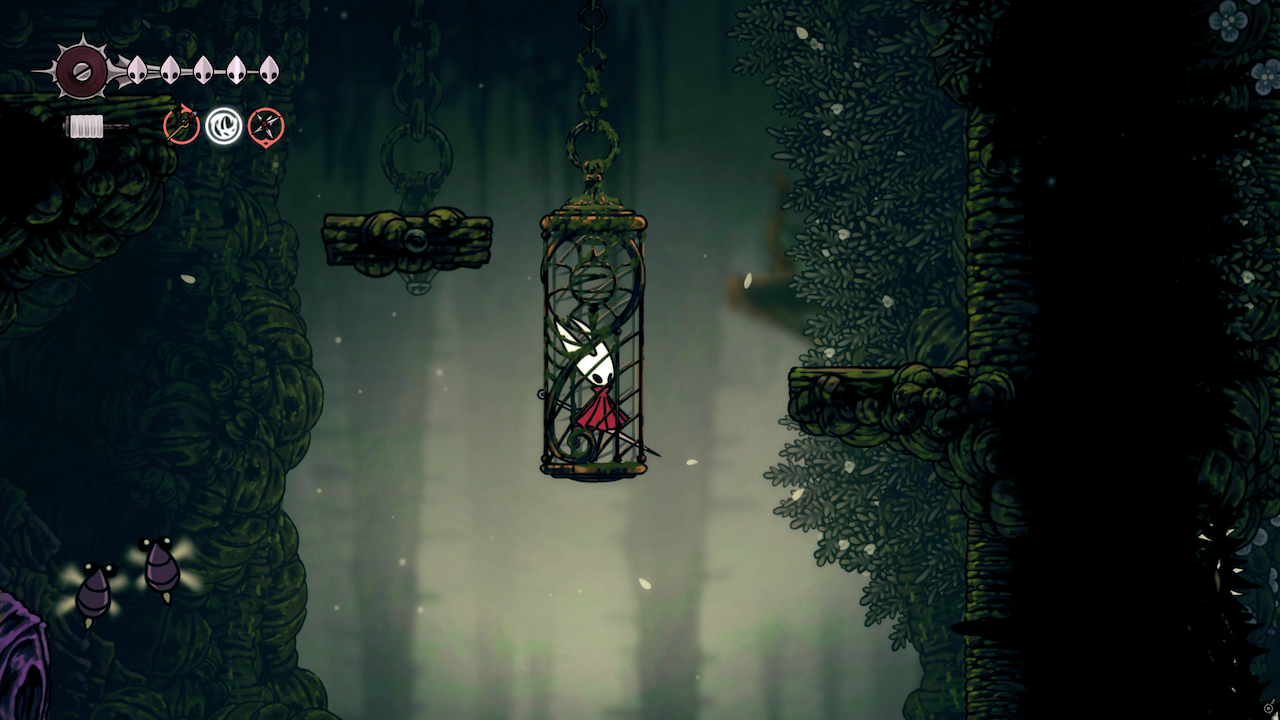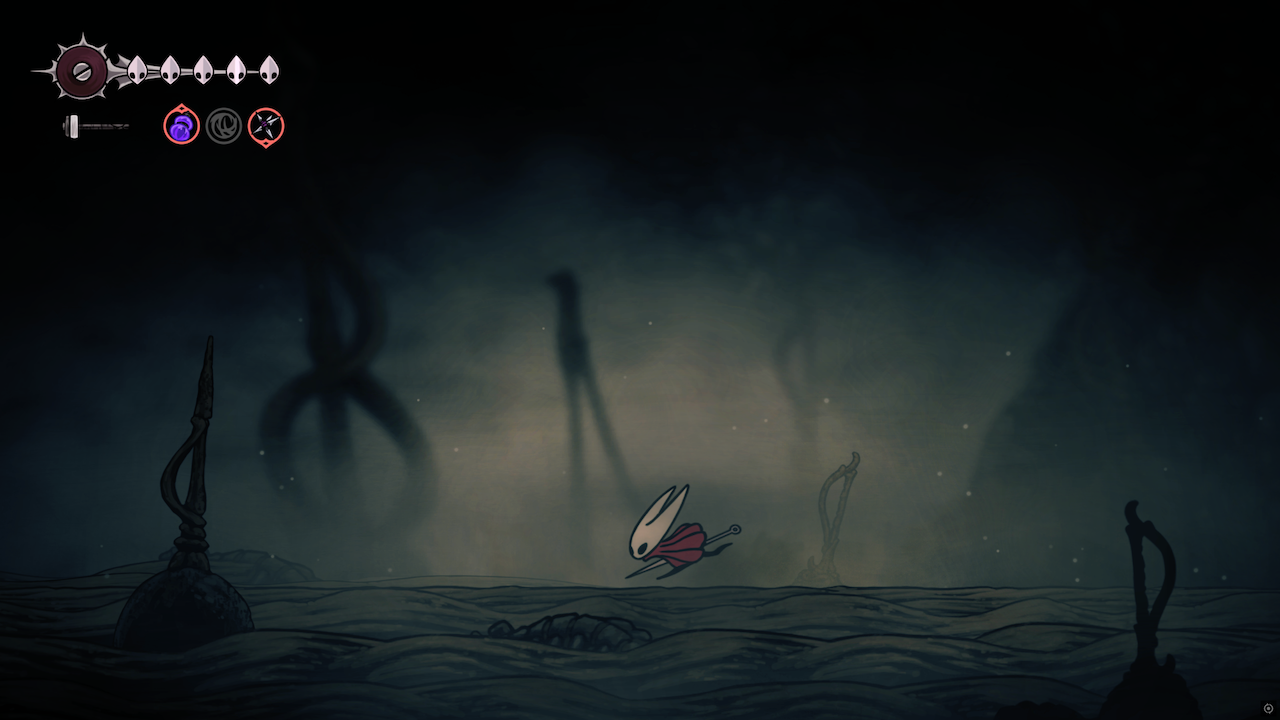
With Hollow Knight: Silksong continuing to dominate the indie game attention economy, I’ve come to the terrible conclusion that I have a couple of cents to contribute to ongoing conversations around video game difficulty. So, into the poison swamp of discourse I go.
More than six years ago, I wrote a post about why I thought that Sekiro: Shadows Die Twice would be a better video game if it had provided more flexibility around difficulty. Back then I was on WordPress and had built-in commenting capabilities, and it’s my first (and maybe only) blog post that inspired a long and somewhat snarky disagreement by an anonymous commenter. They were so impassioned that their comment was longer than the blog post, and to this day I have no idea if it was someone I know or a total stranger.
My blog isn’t hosted there anymore, and I didn’t choose to migrate that particular post, but in the interest of transparency (and in letting this anon have their say as long as I get mine), I’ve dug up the archive. To summarize: at the time I felt that there would have been good reason for Sekiro (a game I adored) to provide some options to players who might want to tune their experience towards easier progress. I made a few simple claims to this effect, followed by several refutations of the boring, common arguments I’d seen people level in defense of its immovable difficulty. My whole post has a bit more backseat game design than I might deploy today, and I probably don’t think of difficulty as much in terms of inclusiveness nowadays. I won’t summarize the commenter’s spirited rebuttal, but I won’t discourage anyone from taking a peek at it either.
Video game difficulty is a strange topic; it’s incredibly personal, but also highly animating. Even outside of all the gatekeeping, we like to talk about it because it’s so key to what games uniquely do and make us feel. Difficulty is understood to be experienced subjectively, but frequently framed around more objective details like i-frames or hit boxes. The experience of difficulty certainly arises from identifiable design decisions, but when it’s situated within style, taste, and lineage, it tends to be couched in reductive genre catch-alls. When we talk about difficulty, we rarely articulate the specific cultural moments or trends that it’s responding to or operating within outside of calling it a “soulslike”.
Something that’s readily apparent to anyone who plays games more than a few years old is that the standards and expectations around difficulty have changed dramatically and frequently over the decades. My recent trek through a selection of 90s and 2000s titles via my ongoing (I promise) Backtracking project has been a stark reminder that developers have used difficulty in obnoxious, careless, or uninteresting ways for time immemorial. I smoothed over my experience of A Link to the Past and EarthBound by using emulator save states. But those were always still intentional decisions, as they are now. They were no more defensible then, nor are they defensible retroactively. But they are meaningful facets of the experience of playing those games, parts of their texture and the experiences they produce, both now and in our memories.
When we say that a modern game is unreasonably difficult within its own genre space, the standard that we’re applying is one of the moment, one informed by our collective play experiences and tastes, and it's likely less objective or stable than we imagine it to be. There are design choices we put up with now that we didn’t a decade ago. There are others that we once tolerated, but no longer will. There are some that, when brought back from the past, meet much more intense dislike than they ever had before. Even the most good-faith discussions about difficulty can feel circular, disconnected, and hard to build into real analysis.

Basically, it leaves me wondering: why is this topic both so discussed, and yet eternally unsatisfying and inconclusive? What can our observations about Silksong’s difficulty tell us about our collective expectations and how they’ve been shaped? Why does this discourse always come back with a vengeance? I don't have answers, but I can try to point out what, to me, is instructive about Silksong’s difficulty and how it's deployed. I know others have made similar points, but these are things that ring especially true for me.
My first observation is that challenges tend revolve around finding and maintaining rhythms. I admit that this is the “Sekiro is a rhythm game” take, to a degree. The growing stratification between parrying sickos (this is me) and parrying haters (truly, I completely get it) has games leaning more heavily on learning and matching complex enemy patterns, where a mistake can often mean losing the beat and suffering several more mistakes in quick succession. This often feels really bad, and it’s distinct from taking one or two hits and getting back on track. The flip side is that this style of enemy design seems to produce an especially keen feeling of skillful execution when you do manage to maintain the rhythm; at least, it does for me. Games that allow players to lean heavily on parrying tend to prioritize this learning and matching game, turning the challenge into a dance, an improvised performance. Skillful performance feels great to do! When playing games like Nine Sols or Lies of P, which let me give into my inner parrying sicko, I would work my way from being utterly obliterated by a new boss to toppling them almost entirely unscathed; that creates in a very particular feeling of mastery.
If Silksong is more difficult than Hollow Knight, it could be because the landscape has been shaped by games that more often ask for this kind of mastery from players. The heightened lethality and more substantial health pools of its boss fights are, to me, reminiscent of the parrying-sicko mentality I’ve seen celebrated elsewhere in the space, even without a particular focus on parries. Or, maybe I’m just more attentive to it than I would have been before. Just as the moment has changed, so have I.
My other observation is that modern action game difficulty is deeply concerned with how it asks players to spend their time. Even Silksong’s most punitive design choices are cautious. They’re built to be annoying or discouraging but not especially time-consuming. In particular, the “runbacks” (platforming routes between boss fights and the checkpoints they send you back to on failure) in Silksong that I’ve seen so far are much more optimizable than some of the ones in Hollow Knight (Mantis Lords being a notably tedious one). The runback functions as a disruption of the rhythm of the boss fight, bringing players back into the world of intentional platforming. That disruption can be a meditative break from the fight during which the player can refocus, or maybe just an annoyance that persuades you to try something else or take a break. It might be objectively worse for some folks, but it’s clearly a deliberate change to the experience of the fight, an escalating of the stakes of a single attempt.
Once you’ve got Hornet’s first movement upgrade, getting around the world is pretty fast, especially compared to Hollow Knight. Speed and scale are being deployed to make the world feel bigger, but not necessarily more tedious to traverse. Silksong understands very clearly how much it’s asking us to repeatedly tread routes, and still, it does so with real precision.
Silksong is also layered with subtle indicators to players that there are other things they might work on besides the challenge directly in front of them. It introduces quests that send you to scour places you’ve already been, its paths branch frequently, and it provides numerous avenues for improvement and build-crafting.
It isn’t necessarily true that these things will stop you from beating your head against a stubborn challenge (I’ll admit I’m personally guilty of this), but it’s clear that it wants you to acknowledge them. In fact, many of these alternate incentives feel onerous or tedious to some players in their own right. But whether or not they liberate us from our struggles is only one way to read their intent. Maybe they aren’t just there to remind us of other possible approaches, maybe they’re intended to make the world feel bigger and more mysterious, or maybe they want to encourage players to revisit places where they could have missed secrets. Even if they do all these things, maybe they’re still being drowned out by the drive to return to your corpse and recover your resources… or by a cultural moment that’s been telling us for over a decade now to “git gud” and persevere in the face of frustration or drudgery, an impulse that might linger no matter how soundly we reject it.